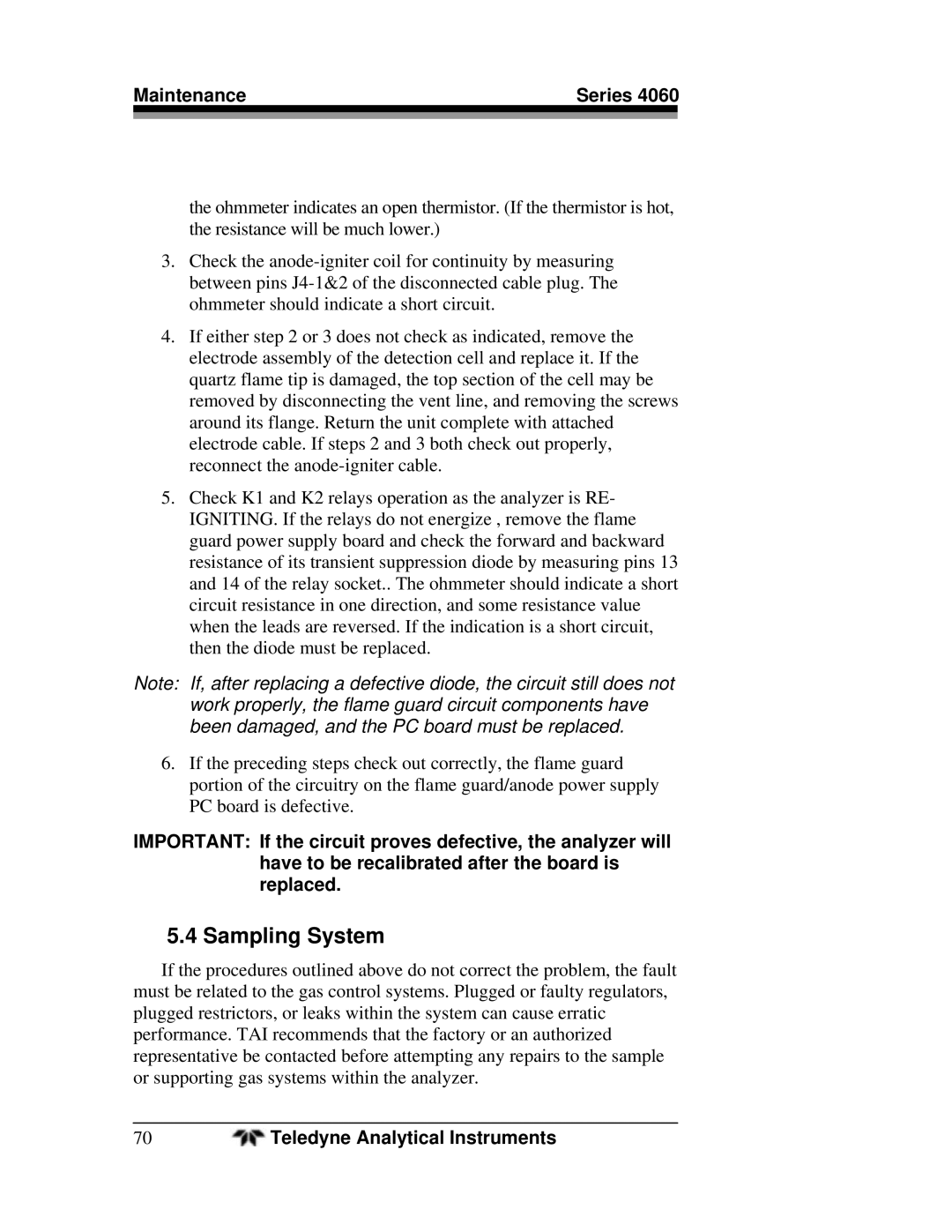Maintenance | Series 4060 | |
|
|
|
|
|
|
the ohmmeter indicates an open thermistor. (If the thermistor is hot, the resistance will be much lower.)
3.Check the
4.If either step 2 or 3 does not check as indicated, remove the electrode assembly of the detection cell and replace it. If the quartz flame tip is damaged, the top section of the cell may be removed by disconnecting the vent line, and removing the screws around its flange. Return the unit complete with attached electrode cable. If steps 2 and 3 both check out properly, reconnect the
5.Check K1 and K2 relays operation as the analyzer is RE- IGNITING. If the relays do not energize , remove the flame guard power supply board and check the forward and backward resistance of its transient suppression diode by measuring pins 13 and 14 of the relay socket.. The ohmmeter should indicate a short circuit resistance in one direction, and some resistance value when the leads are reversed. If the indication is a short circuit, then the diode must be replaced.
Note: If, after replacing a defective diode, the circuit still does not work properly, the flame guard circuit components have been damaged, and the PC board must be replaced.
6.If the preceding steps check out correctly, the flame guard portion of the circuitry on the flame guard/anode power supply PC board is defective.
IMPORTANT: If the circuit proves defective, the analyzer will have to be recalibrated after the board is replaced.
5.4 Sampling System
If the procedures outlined above do not correct the problem, the fault must be related to the gas control systems. Plugged or faulty regulators, plugged restrictors, or leaks within the system can cause erratic performance. TAI recommends that the factory or an authorized representative be contacted before attempting any repairs to the sample or supporting gas systems within the analyzer.
70 | Teledyne Analytical Instruments |
